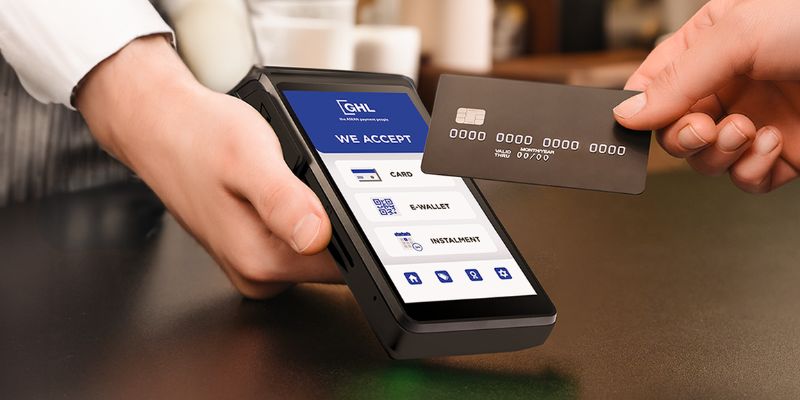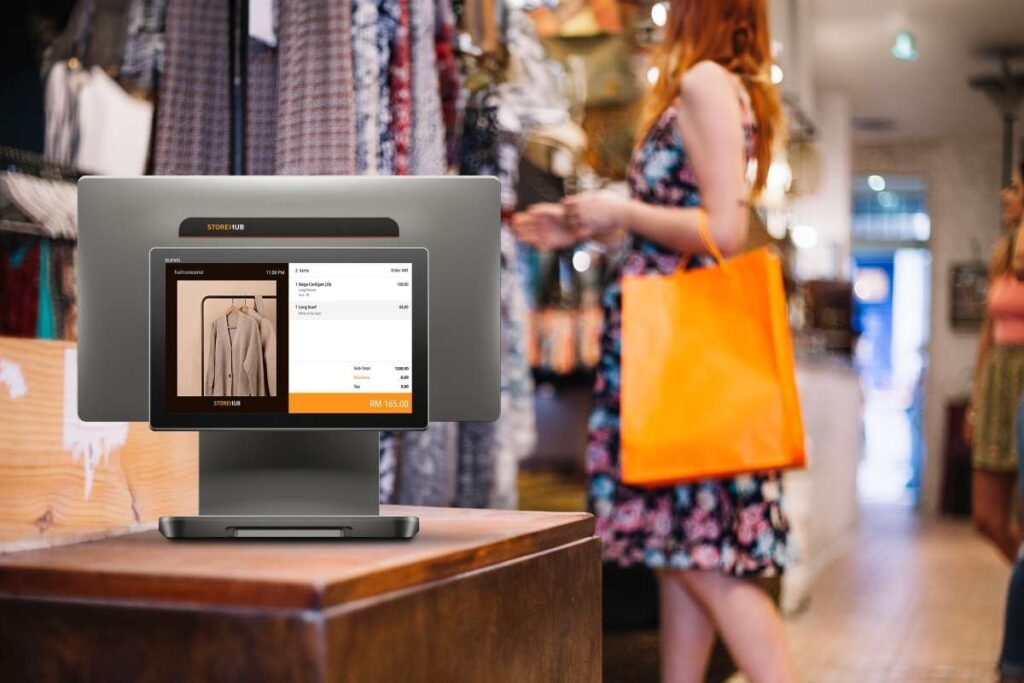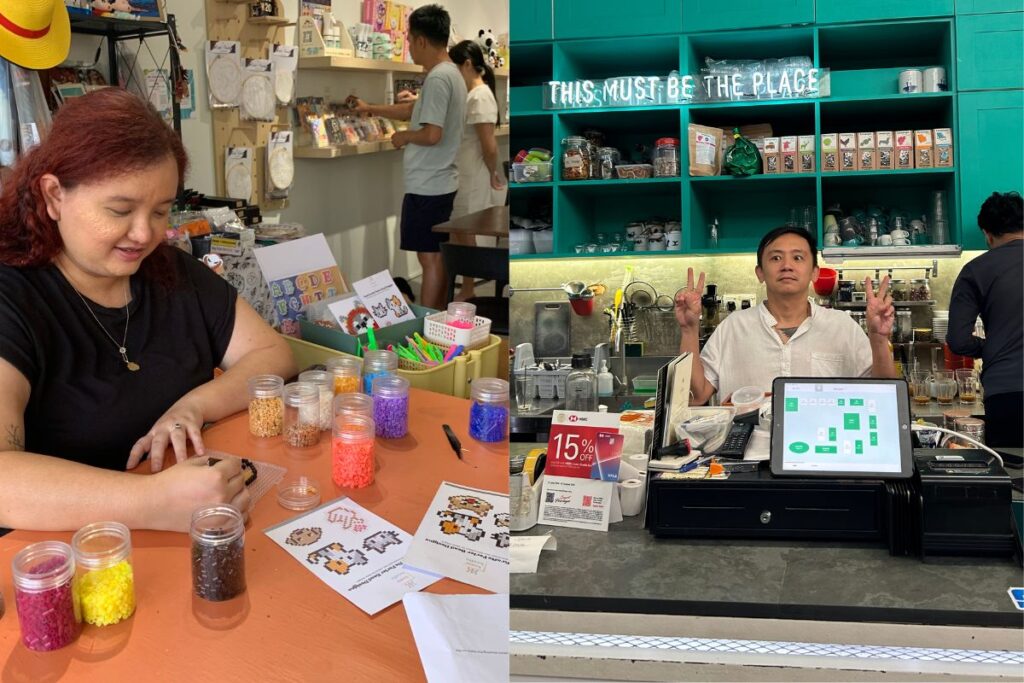A good POS system is more than just a cash register – it’s the backbone of your retail business. With the right features, you can manage inventory without second-guessing stock levels, track sales trends to make smarter decisions and ensure every transaction runs smoothly. The right POS doesn’t just prevent mistakes – it helps you scale efficiently, gain better control, and create a frictionless shopping experience for your customers.
But with so many options on the market, how do you know which features actually matter?
In this guide, we break down the 8 must-have POS features every retail business owner needs to look out for!
1. Inventory Management

It’s a no-brainer that managing inventory is part and parcel of running a retail store. But here’s where many business owners slip – when inventory isn’t tracked or managed properly, poor inventory management can lead to losses of up to 8.3% of total retail sales annually due to stockouts and overstocking.
Think about it: stockouts mean disappointed customers walking away empty-handed while overstocking ties up cash in products collecting dust on your shelves. Add in misplaced stock, inaccurate data, and inefficient restocking, and you have a recipe for profit drain.
That’s why it’s essential to have inventory management features that do more than count products. The key is automation and real-time visibility, which can help prevent errors and improve efficiency.
Look for features like:
- Real-time stock tracking: Every sale, return, or adjustment automatically updates your inventory, reducing manual errors and ensuring accuracy.
- Low-stock alerts: Automated notifications when inventory hits a minimum threshold, so you can restock before products run out.
- Smart restocking recommendations: Some systems even analyse sales trends to suggest optimal reorder points, reducing the risk of over or under-stocking.
Strong inventory management means fewer headaches, fewer lost sales, and more opportunities to scale your business. It’s the foundation that supports every successful retail operation.
2. Omnichannel Selling

Today’s customers shop everywhere – social media, websites, and physical stores. But if your sales channels aren’t connected, it can cause major issues behind the scenes.
What does that mean?
It’s when your physical store, website, and other platforms don’t sync properly, causing issues like selling products that are actually out of stock because inventory isn’t reflected in real time. Inconsistent pricing is another potential issue where promotions are active in-store but missing online, confusing customers.
On top of that, customer purchase data can become fragmented, making it harder to personalise marketing efforts or offer targeted rewards.
This is where omnichannel features in your POS system come in. It’s not just about being present on different platforms but ensuring they all work together seamlessly.
Key features to take note of:
- Integrated Order Management: Allows for online purchases with in-store pickup or home delivery, managed from a single system.
- Consistent Pricing and Promotions: Ensures customers receive the same offers, whether they’re shopping online, in-store, or through social media.
A seamless, connected shopping experience not only drives sales but also strengthens customer trust, making it easier for them to shop however and wherever they prefer.
3. Sales Reporting and Analytics

It’s no secret that most POS systems come with basic sales reports. But the real question is – are those reports actually helping you grow your business?
Many retailers settle for surface-level data: daily sales totals, transaction counts, and maybe a top-seller list. But if you’re only scratching the surface, you’re missing out on insights that could transform how you manage your retail business.
Imagine having a system that not only tracks sales but helps you identify trends, forecast demand, and measure the impact of every business decision. You can uncover patterns like which products sell best during specific seasons, which staff members drive the most revenue, or which promotions deliver the highest return.
Advanced reporting features can help you:
- Spot sales trends over time to plan better for peak seasons and slow periods.
- Analyse product performance beyond just top sellers, identifying hidden growth opportunities.
- Track staff performance metrics to optimise scheduling and incentivise top performers.
- Measure promotion effectiveness to see which campaigns genuinely boost sales—and which don’t.
Instead of just knowing your best-selling product, smart analytics can reveal why it’s performing well. Maybe it’s tied to a specific marketing campaign, customer demographic, or even the day of the week it’s most frequently purchased.
The right reporting tools give you a clear picture of your business, helping you make data-backed decisions that drive growth, improve efficiency, and maximise profitability.
4. Cloud-Bases POS System

We all know the limitations of traditional POS systems – they tie you to the counter, the back office, or a specific device.
So, when it comes to choosing a POS, opting for a cloud-based system is a no-brainer. But beyond the obvious benefits, what many retail business owners don’t realise is how much freedom it gives you to manage your business smarter, not harder.
Imagine being away from your store when sales spike for a popular product. Instead of waiting until closing time, you can check real-time sales from your phone and reorder stock immediately. Or if your staff runs into a pricing issue during peak hours, you can log in remotely, spot the problem, and guide them through the fix without stepping foot in the store.
With real-time access to sales, inventory, and staff performance, you’re not just making things more convenient – you’re gaining complete oversight of your business anytime, anywhere.
Plus, with automatic updates and secure cloud backups, you don’t have to worry about outdated software or data loss.
5. Customer Loyalty and CRM

For many retail business owners, the challenge isn’t getting customers through the door – it’s getting them to return. You can have a great product and excellent service, but if customers don’t feel a reason to return, you’re constantly stuck in the cycle of acquiring new ones, which costs more time and money.
The problem often lies in how customer relationships are managed. Many retailers rely on outdated loyalty programs that lack personalisation or generic promotions that don’t reflect what customers want. Without the right data, it’s hard to know your best customers, what they’re buying, or when they’re likely to return. This disconnect leads to missed opportunities to build meaningful relationships and, ultimately, lose revenue.
This is where integrated Customer Loyalty Program and CRM (Customer Relationship Management) features come in.
By centralising customer data within your POS system, you can move beyond transactional interactions to create more personalised experiences that truly resonate with your customers.
For example, instead of blasting the same discount to every customer, you can:
- Identify high-value customers and reward them with offers tailored to their purchase history.
- Automate personalised promotions based on shopping habits, like sending a reminder when a favourite product is back in stock.
- Track customer engagement to understand what drives repeat purchases and adjust your strategies accordingly.
Building strong customer relationships is key to long-term growth. By leveraging these features, you create an experience that makes customers choose your brand time and time again.
6. Employee Management

Managing people can be trickier than managing inventory. While products stay where you put them, people come with their workflows, habits, and occasional mistakes. And if you’re juggling multiple staff members across different shifts, it’s easy to lose track of who’s doing what.
That’s where having employee management tools integrated into your POS makes a real difference. Instead of relying on guesswork, you get clear, data-backed insights into your team’s performance without hovering over their shoulders.
You can set role-based access, so only the right people can process refunds, apply discounts, or access sensitive sales data. This helps prevent misuse without creating a culture of mistrust.
Plus, tracking individual sales performance shows you who’s excelling and who might need more support, making performance reviews less about assumptions and more about facts.
7. Integrated Payments

Imagine this: it’s the end of a busy day, and instead of closing up smoothly, you’re stuck sorting through receipts, double-checking transactions, and trying to figure out why the numbers don’t add up. Sound familiar? That’s the reality when your payment systems aren’t integrated.
Today’s customers expect payment flexibility – QR payments, e-wallets, credit cards, Buy Now, Pay Later (BNPL). While offering these options keeps customers happy, managing them separately can create hidden headaches:
- Inconsistent sales records that make it hard to track revenue accurately
- Time-consuming manual reconciliations prone to errors
- Security vulnerabilities from handling payments across disconnected platforms
An integrated payment system takes the stress out of the process by automatically syncing every transaction with your sales data in real time. The result? Accurate records, less admin work, and a smoother, more secure checkout for both you and your customers.
Because at the core of every successful transaction is how effortlessly your business manages it.
8. Multi-Store Management

Running a single store is challenging enough, but when you’re managing multiple outlets, things can get messy – fast.
Without the right system in place, you’re left juggling spreadsheets, manually transferring stock data, and constantly double-checking if pricing is consistent across locations.
That’s why having a multi-store management feature in your POS system is crucial for any retail business. Instead of treating each store like a separate entity, it connects everything into one central dashboard. This means:
- Real-time visibility of sales and stock levels across all your stores
- Easier stock transfers to prevent overstocking in one location and stockouts in another
- Consistent pricing and promotions, no matter where your customers shop
Imagine noticing that a best-selling item is flying off the shelves in one store but barely moving in another. Instead of placing new orders, you can easily transfer stock between locations, saving both time and money.
When your stores are connected, decisions are made faster, operations run smoother, and your business grows stronger – no matter how many locations your retail business has.
Powering Your Retail Success

At the end of the day, it’s about having the right features on your POS system.The ones that tackle real challenges, save you time, reduce costly errors, and help you make smarter decisions that drive growth for your retail business.
In the fast-paced world of retail, staying competitive isn’t just about keeping up – it’s about staying ahead.
Whether you’re running a single store or expanding to multiple locations, these eight features are the foundation for growth, efficiency, and long-term success. They help you stay in control of your operations, deliver better customer experiences, and future-proof your business.
Ready to see how these features can work together to power your business?




